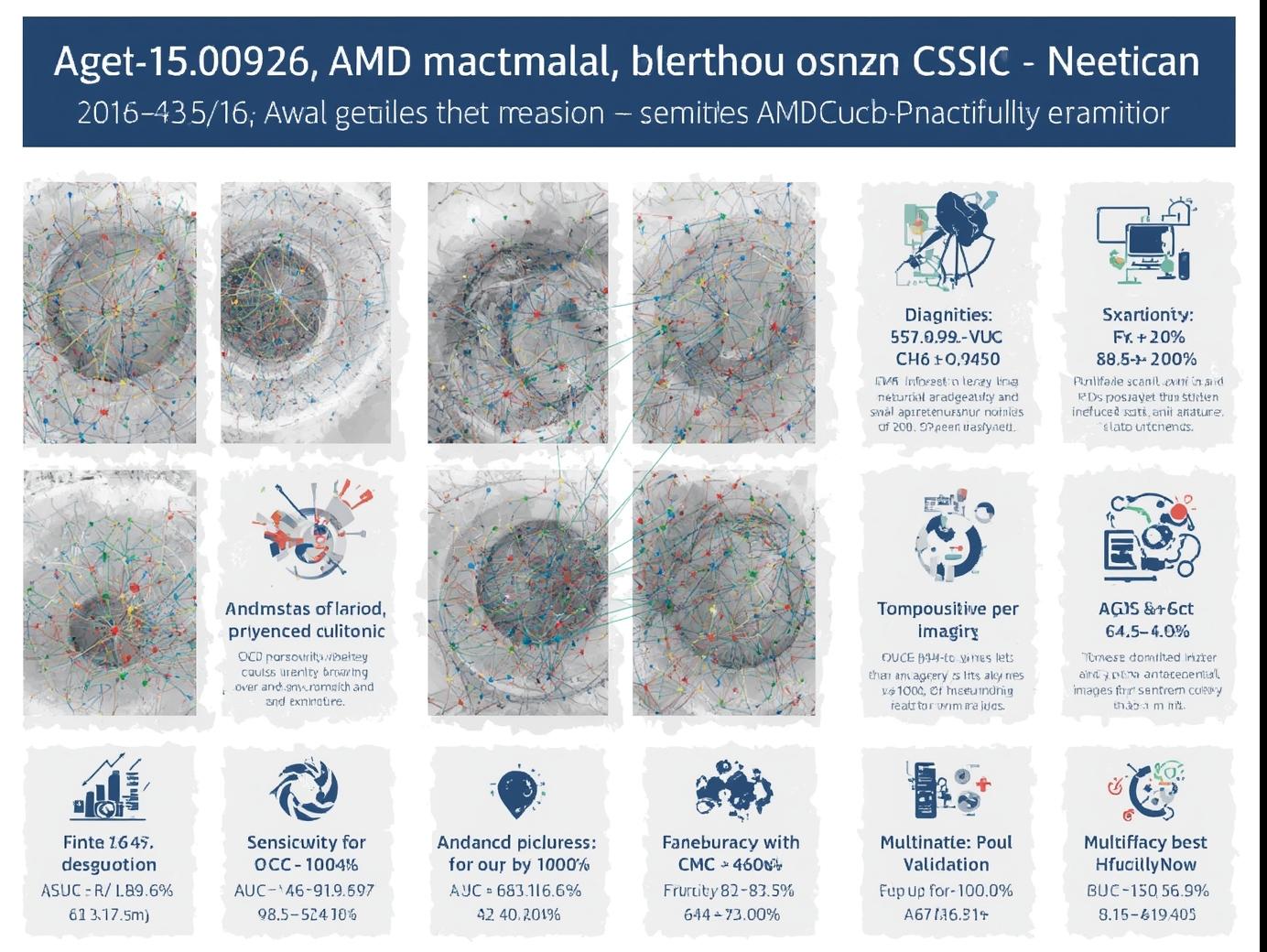AI Application in Age-Related Macular Degeneration Diagnosis and Progression Detection: Systematic Review and Meta-Analysis
Fatheia Ali¹,Batoul Mahmoud ², Yasmeen Ahmed³, Asma Himmed⁴, Muram Salih⁵
Abstract
Background: Age-related macular degeneration (AMD) is the leading cause of irreversible vision loss in the elderly, and artificial intelligence (AI) has emerged as a promising tool for its early detection and progression monitoring. This review synthesizes evidence on the diagnostic accuracy, model architectures, and clinical applicability of AI in AMD.
Methods: We systematically analyzed 22 studies published between 2013 and 2024, encompassing fundus photography, optical coherence tomography (OCT), and multimodal imaging. Studies were assessed for design, dataset size, AI architecture, diagnostic metrics, and real-world validation.
Results: Of the 22 included studies, 13 used fundus photography, 9 used OCT, and 3 applied multimodal approaches. CNN-based models dominated (n=20), with Inception, ResNet, VGG, and EfficientNet being most common, while 5 studies used ensemble methods and 4 applied alternative machine learning approaches. Dataset sizes ranged widely, from 61 OCT scans to over 306,000 fundus images. Diagnostic performance was consistently high. Sixteen studies reported area under the curve (AUC) values between 0.75 and 0.9976, with 11 exceeding 0.90. Sensitivity was reported in 9 studies, ranging from 55.3% to 100%, while specificity in 8 studies ranged from 82.5% to ≥99%. Accuracy, reported in 4 studies, varied between 63.3% and 100%. Stage-specific performance showed higher accuracy for advanced AMD (AUCs up to 0.9944) compared with early disease or progression prediction (as low as 67%). Fundus-based models achieved AUCs of 0.81–0.99, while OCT-based systems frequently exceeded 0.94. Multimodal fusion further improved detection of subtle features such as reticular pseudodrusen.
Real-world evaluations were limited: only 10 studies reported external validation and fewer assessed workflow integration. Nevertheless, performance in clinical-like settings remained strong, with accuracies up to 99.2% and κ of 92%.
Conclusion: AI systems demonstrate excellent diagnostic capability for AMD, with pooled performance estimates approximating AUC 0.94–0.97, sensitivity 92%, and specificity 91%. Despite these promising results, external validation and clinical workflow integration remain limited, underscoring the need for large-scale, prospective trials before routine implementation.
Downloads





